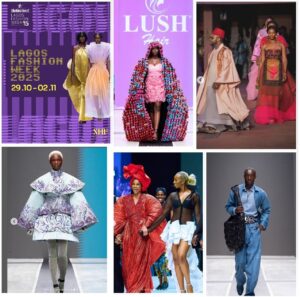By Antoine Pepper
In today’s digital age, a new cultural phenomenon has emerged, one cloaked in pastel aesthetics and wellness talk but underpinned by a potent ideological undercurrent Called the “womanosphere,” this online ecosystem positions itself as an alternative to mainstream feminism: a space where women are encouraged to be thin, fertile, and Republican, embracing traditional femininity and patriarchal ideals, all while rejecting feminist values.
What the Womanosphere Looks Like
Key figures like Candace Owens, Brett Cooper, Allie Beth Stuckey, and platforms such as Evie magazine and influencer Hannah Neeleman are central to this movement. Through lifestyle, wellness, and parenting content, they promote domesticity, submission to men, and a nostalgia-tinged aesthetic that feels disarmingly accessible.
Far from benign, critics view this as a politically motivated push: a subtle cultural campaign backed by right-wing strategists like Steve Bannon and Leonard Leo, using lifestyle media to advance regressive gender norms.
Real Voices: Supporters and Critics
Supporters from Within the Womanosphere, while overt quotes are less accessible, the ethos they promote, seen in their content is clear: uphold traditional roles, reject feminist victimhood, and embrace a faith- and family-centered life. As described in a Christian conservative analysis:
“The womanosphere encourages women to take responsibility for their choices, choosing to build families and support their husbands, rather than blaming systemic oppression.”
These women are positioned as virtuous nurturers, fulfilled at home rather than in activist arenas.
Critics and Concerned Observers
1. Cultural Regression
One Guardian commentary warns:
“This movement is backed by major conservative figures … aiming to infiltrate women’s lifestyle spaces with regressive, authoritarian values.”
Evotek’s media analysis likewise flags it as “a threat to women’s progress,” warning of the rollback of reproductive rights and political agency.
2. Misogyny in Disguise
Academic discourse on the “femosphere” (an overlapping term) describes it as training grounds for misandrist and reactionary messaging. Scholars note that these spaces often mirror the misogynistic manosphere, with women adopting conservative scripts about gender difference.
3. Financial Incentives and Clickbait
Online critiques, notably from Reddit users call out the movement’s performative nature. One user remarks:
“They have just figured out a way to shout ‘Pick me!’ more loudly, and to make money doing so.”
Another adds:
“It’s all a shill to make money and drive clicks. I mean rage-bait is a pretty good way to get your face seen …”
These blunt takes expose a commercial underbelly: ideology as revenue stream.
4. Internal Hypocrisy
An essay on anti-feminist sub-movements like “Women Against Feminism” (a comparable ideological strain) points out the irony:
Many account holders wrote, “I don’t need feminism because … I can vote. I can choose how to live my life.” To others, she responds:
“Anti-feminism organizing is based on a deep hypocrisy of selfishness … an ideology built to assure conservative women that as long as they are doing just fine, other women will make do.”
This relative privilege, comfortable women distancing themselves from feminist causes because they’re “okay” reveals an exclusionary tilt.
Analysis: What Does the Womanosphere Tap Into?
1. Cultural Nostalgia & Identity
In an uncertain world, the allure of tradition, faith, family, home offers comfort. The womanosphere reframes those values as empowerment: “Choose motherhood and you are fulfilled.”
2. Aesthetic Packaging
By wrapping ideology in sleek magazines, wellness tips, and Instagrammable images, it appeals to modern sensibilities while promoting old scripts.
3. Political Strategy Through Lifestyle
Research from Guardian and others suggests this is not accidental. It’s a strategic cultural pipeline: reshape perceptions of femininity with political ends.
4. Ideological Commodification
The movement commodifies identity, traditional, conservative womanhood becomes a brand. Monetizing ideological purity turns belief into spectacle.
My Perspective
Reflecting critically: “I’d say some women hide behind feminism, or claim to be feminists only when it benefits them.”
This aligns with the concept of “pseudo-feminism,” where feminist ideals are co-opted or invoked selectively. It’s about convenient appearances, not commitment.
Yet, the womanosphere pushes that even further, offering a manufactured identity: “I’m a woman of faith, oppressed by woke culture and freed by domesticity.” When feminism doesn’t suit the narrative, it’s rejected, not interrogated.
At the end, the womanosphere is far more than lifestyle influencer culture, it’s a sophisticated, politically tinged campaign that repackages conservative gender norms for modern consumption. Its pull lies in aesthetic appeal and ideological reassurance, but its impact risks eroding women’s autonomy under a veil of empowerment. While some women may retreat to traditionalism sincerely, many do so within a narrative that conveniently abandons feminism when it’s inconvenient, an echo of pseudo-feminism’s opportunistic shadow. For some, is only as deep as it’s profitable.







